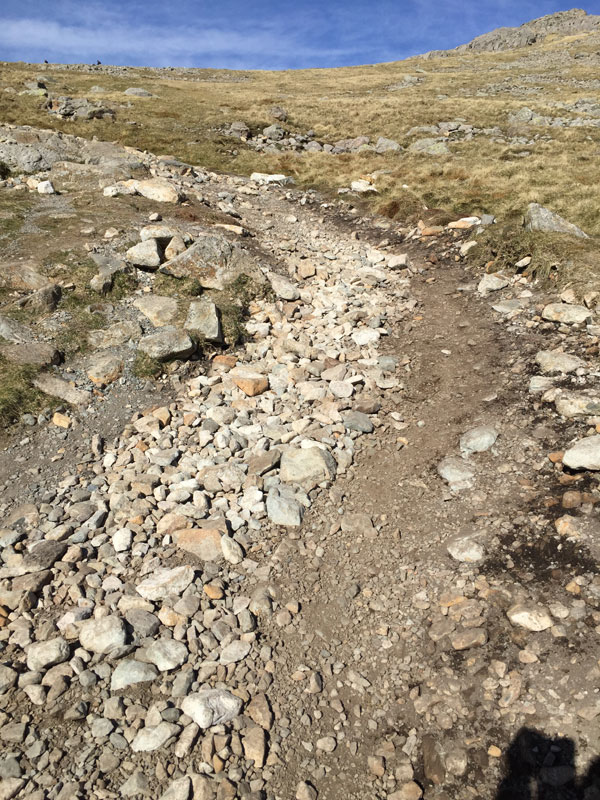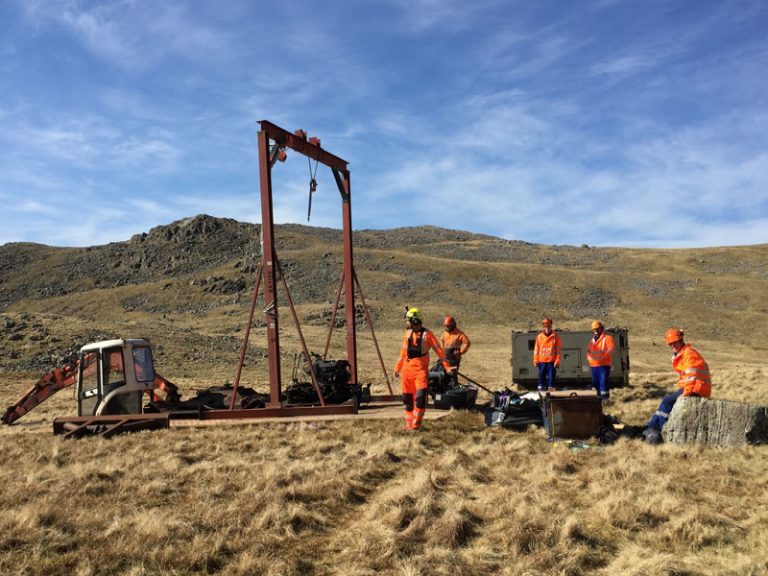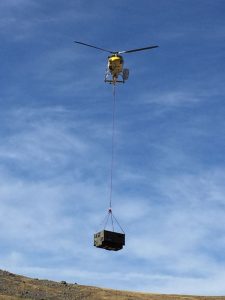Work begins to fix footpaths on England’s highest mountain 
- Higher visitor numbers and extreme weather speeding up erosion on England’s highest mountain
- Fix the Fells undertaking footpath repair work on five sections of path on most popular route up to the summit of Scafell Pike
- Work needed to protect environmentally sensitive upland grasslands and prevent scarring on the world-renowned landscape
- Updated Countryside Code encourages walkers to stick to paths to help protect landscapes as more people enjoy the outdoors
Work is underway to repair paths and prevent damage to the landscape on one of the Lake District’s most popular walking routes at Scafell Pike. As England’s highest mountain at 978 metres and World War I memorial, it is cared for by the National Trust and climbed by more than 250,000 people every year.
With more people enjoying spending time in nature and the easing of lockdown restrictions expected to lead to a rise in visitors to the Lake District over the coming months, it is anticipated that more visitors than ever will tackle the famous ascent in 2021. The pressure of hundreds of thousands of boots and the Cumbrian weather is leading to rapid erosion of paths, which is now an annual maintenance challenge for the conservation charity.

Fix the Fells[1] – a partnership between the National Trust and four other organisations which care for the paths in the Lake District – are this week recommencing work to repair worn sections of path on one of the most popular routes[2] to Scafell Pike’s summit from Wasdale Head. It is hoped the work will prevent further erosion in the landscape and protect the mountain’s fragile upland habit and the rare plants its supports.
Fix the Fells Programme Manager Joanne Backshall said:
“It is wonderful that so many people are enjoying Scafell Pike and the surrounding peaks each year. Now more than ever, we’re seeing more people reaping the benefits that spending time in nature can bring”.
“Although the mountains will be here forever, they need ongoing care. With so many people using this route up Scafell Pike, human-related erosion is spiralling out of control and having a devastating effect on wildlife and habitats. The work we are doing to maintain and repair eroded footpaths on Scafell Pike is critically necessary to protect this iconic mountain, its environmentally sensitive habitats and this world-renowned scenic landscape, so that people can continue to enjoy this classic ascent and the natural beauty of the Lakes for years to come.”
By repairing and creating more resilient paths better capable of managing increasing visitor numbers to the Lake District fells, Fix the Fells aims to reduce soil, gravel, stone and peat degradation in upland areas which results in the loss of rare upland habitats and species decline, as well as having an impact on rivers and lakes below as sediment is washed off fellsides.
The work, which has just started on Scafell Pike, will concentrate on five sections of path totalling 1km in length and will see repairs and maintenance carried out from the valley bottom up to the summit top[3]. Work will include addressing gullying and degradation caused by heavy use, replacing worn stone pitching with new, installing drains to help prevent weather erosion and defining paths to limit path spread and damage to the thin, upland soils surrounding the peak.
Most of the work will be carried out by hand by a team of five rangers, using materials found on the mountain where possible, while 230 bags of stone will be lifted onto the mountain by helicopter for repairs. [4]
Excavator
For a stretch of path between Hollowstones to Lingmell Col, a 360 degree excavator will be used to rework a significantly eroded aggregate surface[ 5].
The excavator will be used to ‘sub-soil’ 250m of path to create a resilient surface in this very high and remote location, ensuring the work is completed faster and more efficiently than by hand, allowing the area to recover more quickly.
The excavator will be flown onto the fellside in pieces and reassembled by specialist contractors[6].

Liam Prior, the National Trust’s area ranger for Wasdale said:
“The work to repair the paths on Scafell Pike is a huge but essential undertaking, requiring the team to work in some challenging conditions. Scafell Pike is home to a unique ecosystem of rare upland plants and soils that are particularly thin and fragile. These soils accumulate slowly over hundreds of years so damage from even one stray footprint can take centuries to recover, if at all. Our focus is on preventing and restoring eroded, widened and undefined paths that lead to people spreading out onto the grassland and soil that surrounds them”.
“Where restoration is needed we will use traditional and sustainable methods to create resilient surfaces which are better able to withstand the increasing numbers of visitors and more frequent severe weather events. By looking after these upland paths, we’re not only helping important upland habitats to survive and thrive, we’re preserving the unique beauty that makes the Lake District landscape so special.”
The Fix the Fells partnership, which includes the National Trust, has been repairing paths in the Lake District for the past 20 years, raising £500,000[7] each year to go towards fixing and maintaining 400 miles of paths across the UNESCO world heritage site[8].
Editor’s notes:
[1] Fix the Fells is a partnership programme between the National Trust, the Lake District National Park, Natural England, Friends of the Lake District and the Lake District Foundation. The aim of the Fix the Fells partnership is to protect the spectacular Lake District landscape from erosion damage by repairing and maintaining upland paths.
‘Fix the Fells’ Rangers and Volunteers work every year to repair damage and create sustainable paths across the Lake District, to balance conservation with public access.
The core, heavier repair work is done by National Trust Rangers each year from March to November. But volunteers keep working all the year round doing maintenance work and smaller projects during the winter months to include keeping drains clear to help with water run-off. If drains get blocked water can cause huge damage by washing away great swathes of topsoil and stone in heavier deluges.
[2] The route undergoing repairs is approximately 4km in length.
[3] In 2021, Fix the Fells will undertake a programme of path repair and maintenance on Scafell Pike. Work will focus on five sections covering 1km of path.
The work will include repairs to:
- Scafell Pike summit paths ~100m
- Scafell Pike summit down to Broad Crag Col ~250m
- Hollowstones to Lingmell Col ~ 250m sub-soil path, 50m pitched path, 50m light touch work
- Brown Tongue to Hollowstones ~ 70m
- Lingmell Gill ~60m
- Lingmell Breast from the Green, Wasdale Head ~ 120m
[4] Skyhook Helicopters will be used to lift materials onto the fell side.

[5] The path surface was created by machine in 2005 when an increasingly wide erosion scar was repaired. The numbers of visitors have increased enormously since the path was first repaired by machine in 2005, and severe weather has compounded the issue.
[6] The contractors helping with the work are Terra Firma. The cost of the work with the excavator including dismantling, re-assembling and flying it onto Scafell Pike is £50,000.
[7] The partnership has a total annual budget of £800,000 with 45 per cent covered by grants including one from the European Regional Development Fund. This means £500,000 has to be raised each year through fund raising.
[8] There are approximately 3,100 km (1,926 miles) of pathways across the Lake District National Park. See: https://www.lakedistrict.gov.uk/caringfor
